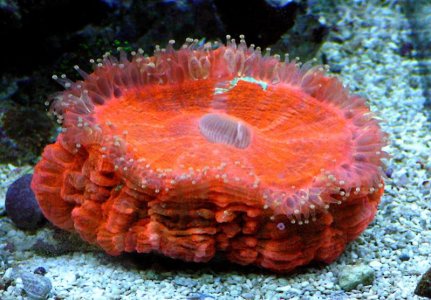Guygettnby
Well-known member
i got a coral from a buddy of mine and i am trying to figure out if it is a small scolymia or a acan maxima. it is only about 2" round and attached to a piece of live rock. i have been doing some reading on them but am still abit confused as to wich this coral would fall under. it seems to like were it is at now but i will be putting it in a different tank pretty soon. wanna make sure i care for it properly.
on the left are some acans wich look different to me then all other acans i have seen and the coral in question is to the right.


if anybody actually knows what the coral is please post up. if you happen to know what kind of acan the other small colony is please let me know that aswell.
on the left are some acans wich look different to me then all other acans i have seen and the coral in question is to the right.


if anybody actually knows what the coral is please post up. if you happen to know what kind of acan the other small colony is please let me know that aswell.

